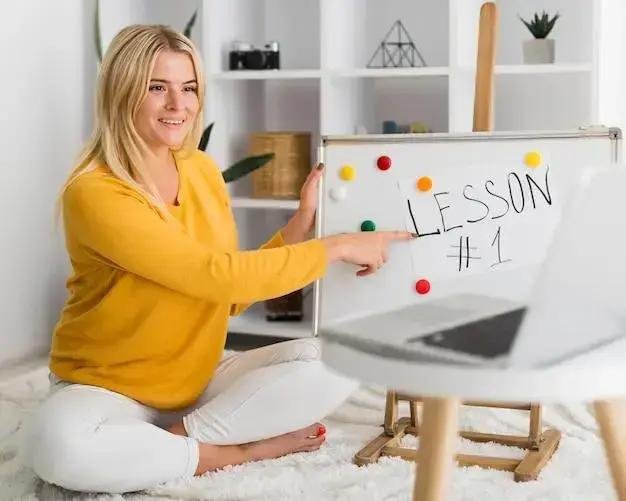Are you ready to dive into the world of sketching for beginners? Whether you’re picking up a pencil for the first time or looking to refine your skills, there’s so much to explore.
Sketching isn’t just about putting pencil to paper; it’s about expressing yourself and capturing the world around you.
In this guide, we’ll cover essential tips and techniques that will help you develop your sketching skills, find inspiration, and enjoy the process of drawing every day.
Understanding Basic Sketching Materials
When it comes to understanding basic sketching materials, having the right tools can make all the difference in your drawing experience. Here’s a quick rundown of what you need:
Pencils: Start with a range of pencils, from hard (H) to soft (B). H pencils are great for fine lines and details, while B pencils are perfect for shading and darker lines. A good set might include 2H, HB, and 2B pencils to give you flexibility.
Paper: Not all paper is created equal! For sketching, look for sketch pads that have a bit of texture, which helps hold the graphite better. You can also experiment with different types of paper, like smooth bristol for detailed work or newsprint for quick sketches.
Erasers: A good eraser is essential. Consider having both a kneaded eraser, which can lift graphite without damaging the paper, and a vinyl eraser for more precise corrections.
Blending Tools: Tools like blending stumps or tortillons can help you create smooth transitions between shades. Alternatively, your finger can work in a pinch, just be mindful of smudging!
Optional Tools: If you want to add some flair to your sketches, consider colored pencils or fine-liners for outlining. These can help you explore different styles and techniques.
Investing in quality materials doesn’t have to break the bank. Start with the basics and gradually expand your collection as you discover what works best for you. Remember, the most important part is to practice and enjoy the process of sketching!
Mastering the Fundamentals of Drawing
Mastering the fundamentals of drawing is crucial for anyone looking to improve their sketching skills. Here are some key principles to focus on:
1. Shapes and Forms: Everything you see can be broken down into basic shapes—circles, squares, and triangles. Start by practicing drawing these shapes in various sizes and orientations. Once you’re comfortable, try combining them to create more complex forms. This exercise will help you understand the structure of objects.
2. Proportions: Getting the proportions right is essential. Use reference points to measure the relationship between different parts of your subject. For instance, when drawing a human figure, you can use the head as a unit of measurement to gauge the height of the body.
3. Line Quality: Experiment with different line weights and styles. Varying the pressure on your pencil can create dynamic lines that convey depth and movement. Practice drawing with both light and heavy strokes to see how they affect your sketches.
4. Light and Shadow: Understanding how light interacts with objects will enhance your drawings significantly. Start by studying how shadows are cast and where highlights appear. Use shading techniques like hatching and cross-hatching to create the illusion of depth.
5. Perspective: Perspective gives your drawings a sense of space and realism. Begin with one-point perspective, where all lines converge at a single point on the horizon. As you gain confidence, move on to two-point and three-point perspectives to depict more complex scenes.
Practicing these fundamentals regularly will build a strong foundation for your drawing skills. Remember, it’s all about observation and practice. Don’t be afraid to make mistakes—each one is a stepping stone to improvement!
Techniques to Improve Your Sketching Skills
Improving your sketching skills takes practice and dedication, but there are several techniques that can help you along the way. Here are some effective strategies:
1. Gesture Drawing: This technique focuses on capturing the essence of a subject in a short amount of time. Set a timer for 1-5 minutes and quickly sketch the basic shapes and movements of your subject. This practice helps you loosen up and increases your ability to capture motion and form.
2. Continuous Line Drawing: Try drawing without lifting your pencil from the paper. This continuous line technique forces you to observe your subject more closely, as you can’t rely on erasing or making corrections. It often leads to interesting and dynamic sketches.
3. Blind Contour Drawing: In this exercise, you draw the outline of your subject without looking at your paper. It may feel challenging at first, but it sharpens your observational skills and helps you develop a more intuitive understanding of shapes and forms.
4. Experiment with Different Styles: Don’t be afraid to try different styles and techniques. Whether it’s realism, abstraction, or cartooning, exploring various approaches can help you discover your unique artistic voice and improve your versatility as a sketch artist.
5. Keep a Sketchbook: Make it a habit to carry a sketchbook with you wherever you go. Use it to jot down ideas, practice techniques, or sketch anything that catches your eye. Regularly filling your sketchbook not only improves your skills but also serves as a visual diary of your artistic journey.
Remember, the key to improvement is consistency. Set aside time each day to practice these techniques, and don’t be discouraged by setbacks. Embrace the learning process, and soon you’ll see significant growth in your sketching abilities!
Finding Inspiration for Your Sketches
Finding inspiration for your sketches can sometimes feel like a daunting task, but there are countless sources around you waiting to be explored. Here are some tips to help you discover new ideas:
1. Nature: Step outside and immerse yourself in the beauty of nature. Whether it’s the intricate details of a flower, the texture of tree bark, or the vastness of a landscape, nature offers endless subjects to sketch. Bring your sketchbook along on walks or hikes to capture what you see.
2. Everyday Life: Look for inspiration in your daily surroundings. The people you encounter, the architecture of buildings, or even the items on your desk can spark creative ideas. Try sketching scenes from your daily life, capturing moments that resonate with you.
3. Art and Photography: Explore the works of other artists, whether through galleries, museums, or online platforms like Instagram and Pinterest. Analyze their techniques and styles, and consider how you can incorporate elements into your own work. Photography can also be a fantastic source of inspiration—try sketching from photos that capture your interest.
4. Books and Movies: Stories can ignite your imagination. Whether it’s a novel, a film, or a comic book, the characters and settings can provide a wealth of ideas for sketches. Try illustrating scenes or characters that you find compelling, allowing your interpretation to shine through.
5. Prompts and Challenges: Participate in drawing challenges or use prompts to push your creativity. Websites and social media platforms often host monthly challenges that provide daily themes or subjects. These can help you step outside your comfort zone and explore new topics you might not have considered.
Ultimately, inspiration is everywhere—you just need to be open to seeing it. Keep your sketchbook handy, and don’t hesitate to jot down ideas whenever they strike. The more you explore, the more your creativity will flourish!
Creating a Daily Sketching Habit
Creating a daily sketching habit can significantly enhance your skills and boost your creativity. Here are some practical tips to help you make sketching a regular part of your routine:
1. Set a Specific Time: Choose a specific time each day dedicated to sketching. Whether it’s in the morning with your coffee or in the evening after work, consistency is key. By establishing a routine, you’ll begin to associate that time with creativity and practice.
2. Start Small: If you’re new to daily sketching, don’t overwhelm yourself. Start with just 5-10 minutes a day. As you become more comfortable, gradually increase the time you spend sketching. The important thing is to make it a regular practice without feeling pressured.
3. Create a Comfortable Space: Designate a cozy spot for your sketching sessions. Whether it’s a corner of your living room, a park bench, or a café, having a comfortable and inspiring environment can make a big difference in your motivation to sketch.
4. Use Prompts: If you find yourself struggling with what to draw, use prompts or challenges to guide your daily practice. You can find lists of prompts online or create your own. This can help spark your creativity and keep your sketches fresh and exciting.
5. Track Your Progress: Keep a sketch journal or a digital gallery to document your daily sketches. Not only does this allow you to see how much you’ve improved over time, but it also serves as a source of motivation. Celebrate your progress, no matter how small, and don’t be afraid to revisit older sketches to see how far you’ve come.
Remember, the goal of creating a daily sketching habit isn’t perfection but rather the joy of expressing yourself and honing your skills. Embrace the process, and soon enough, sketching will become an enjoyable and rewarding part of your everyday life!
Conclusion
In conclusion, sketching is a rewarding journey that begins with understanding the basics and gradually building your skills.
By mastering fundamental techniques, exploring various sources of inspiration, and committing to a daily sketching habit, you can unlock your creative potential and enhance your drawing abilities.
Remember, every artist started as a beginner, and the key is to practice regularly and enjoy the process.
So grab your sketchbook, embrace your creativity, and let your imagination flow—your artistic adventure awaits!
Frequently Asked Questions about Sketching for Beginners
What materials do I need to start sketching?
To start sketching, you’ll need basic materials like pencils, paper, erasers, and optionally, blending tools. A range of pencils (H to B) is ideal for different line qualities.
How can I improve my sketching skills?
Improving your sketching skills involves practicing techniques like gesture drawing, continuous line drawing, and experimenting with different styles. Regular practice is key.
Where can I find inspiration for my sketches?
Inspiration can be found in nature, everyday life, art and photography, books and movies, and drawing prompts or challenges. Keep your eyes open to the world around you!
How do I create a daily sketching habit?
To create a daily sketching habit, set a specific time each day, start small with just a few minutes, and create a comfortable sketching space. Tracking your progress can also help keep you motivated.
What are some fundamental techniques I should focus on?
Focus on mastering shapes and forms, proportions, line quality, light and shadow, and perspective. These fundamentals will provide a strong foundation for your drawing skills.
Is it important to track my progress in sketching?
Yes, tracking your progress is important as it allows you to see how much you’ve improved over time and helps to motivate you to keep practicing and exploring your creativity.





